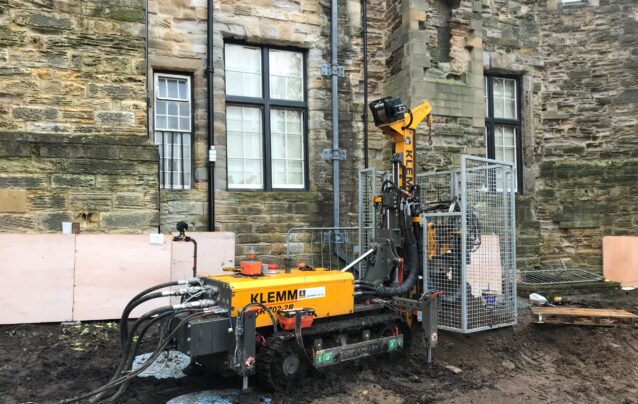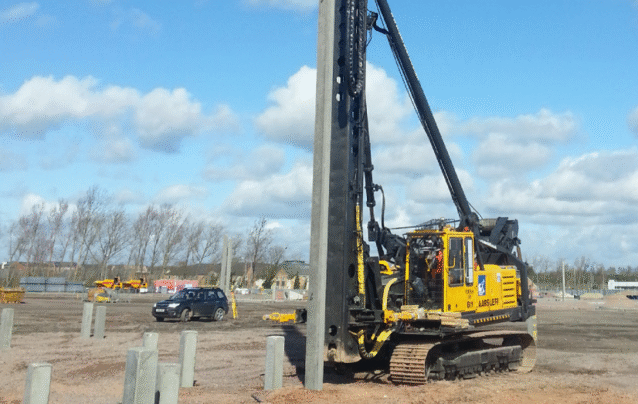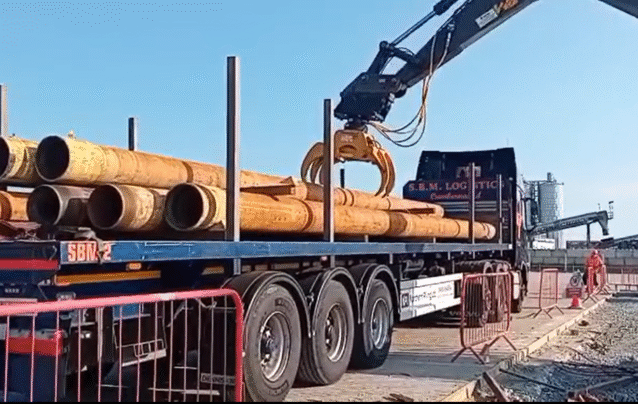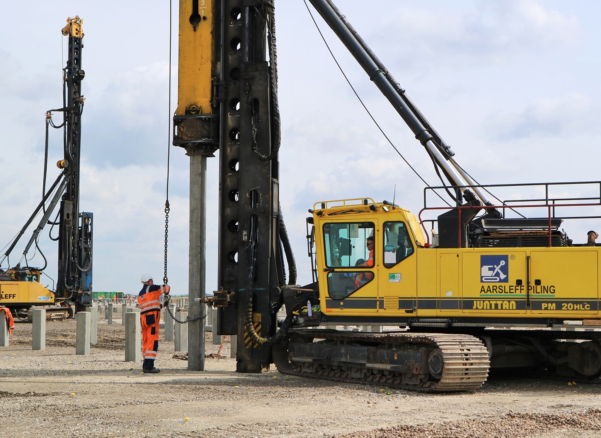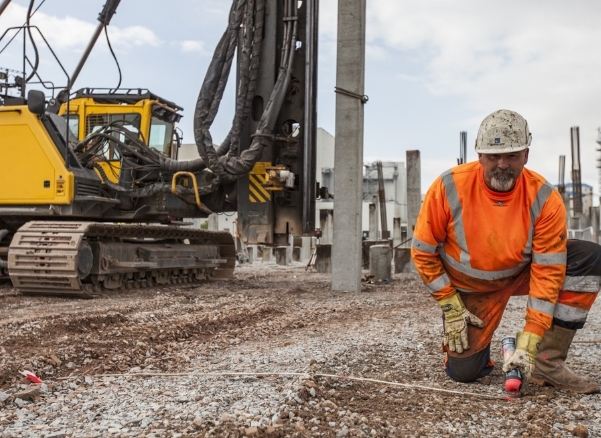Canvey Island Student Housing
AARSLEFF’S EXPERTISE PROVIDES TAILORED SOLUTIONS BASED ON 30 YEARS OF EXPERIENCE IN THE UK

Project Description
SCOPE OF WORKS 154 No. 250mm x 259mm, precast concrete
reinforced piles; L 26-28m
CLIENT Homestead Plc
EQUIPMENT Banut 700
CONSTRUCTION PERIOD July 2011
Property developer Homestead Plc won planning to construct 46
flats and six shops along the seafront esplanade, Canvey Island.
Canvey Island has a standard design for all buildings, based on
what is called a Canvey raft, with the allowable bearing capacity
for foundation design provided by Essex County Council.
However, Homestead’s design, which featured shops on the
ground floor and a block of flats above, would not allow the load
to be spread adequately for a Canvey raft. Typically, there would
be a lot of walls on the ground level, which would allow provision
for spreading the load and the raft designed in between the
walls, but in this instance the ground floor was designed with
more columns than walls so a piled solution was called for.
Aarsleff had previously installed a number of very long precast
concrete piles for the construction of a nearby school and using
this ‘local’ experience suggested that the piles be much longer
than those specified in a preliminary design and feasibility study.
Homestead, together with its consulting engineer, Wickford based John Sime & Associates, confirmed the need for longer
piles and Aarsleff won the contract in open tender.
Specifically, borehole data from approximately 200m away from
the development was used by Sime & Associates to produce
a preliminary design of the foundations and pile loadings
which indicated the piles needed to be about 18m in length and
subsequently the engineer requested budget prices from four
piling contractors to determine if the project was financially
viable. With the experience gained piling the nearby Castle View
School development, which required 750 piles, at up to 28m in
length, Aarsleff suggested pile lengths of 26-28m as the ground,
was exceptionally poor. In fact, the engineer confirmed that
Aarsleff’s suggested pile lengths were much longer than other
tenders, but a later borehole sunk on the actual site confirmed
the need for the proposed longer piles. A revised tender was
issued and Aarsleff was awarded the contract.
On site, works included the installation of 154 precast concrete piles of 250mm square section, which were supplied and
manufactured by Centrum, Aarsleff’s wholly owned subsidiary,
in Newark Nottinghamshire. All piles were between 26m and
28m long and mechanically jointed with a 14m under pile and
pin jointed over pile, all in accordance with BS EN 12794 (class 1
A). Using its own Banut 700 rig, Aarsleff drove the piles through
layers of alluvium, loose sand and peat, to toe into underlying
dense sand and gravel to take the required maximum 475kN
working load.
Case Study


Please enter your details to download this document
The Latest. News, podcasts & projects


